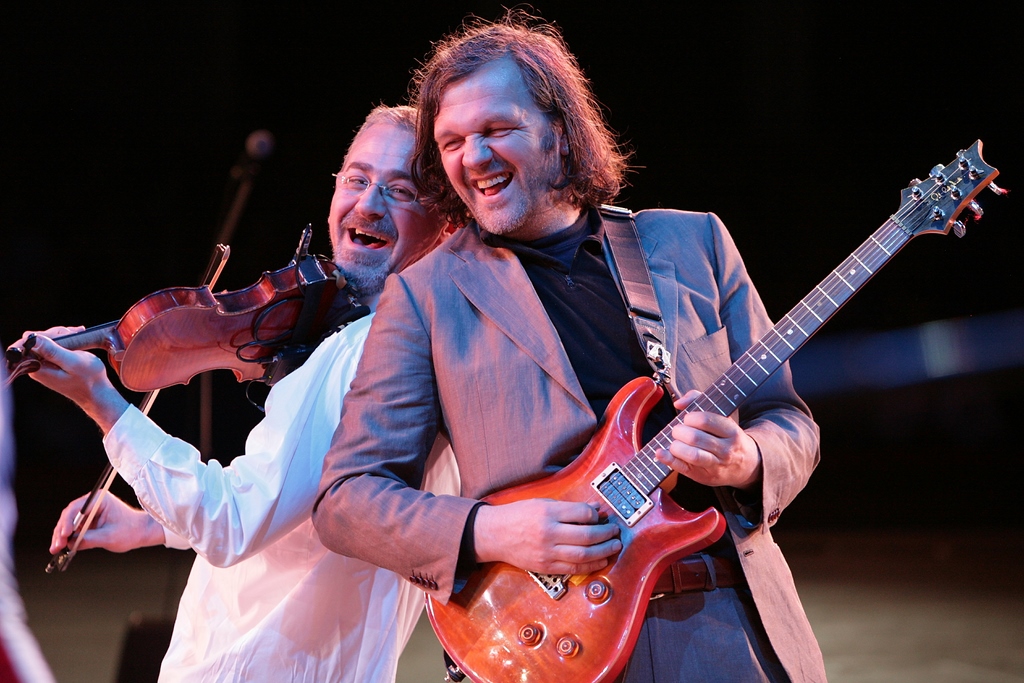Dissociated from any show business church or dogma, Emir Kusturica and The No Smoking Orchestra are a significant phenomenon of the anti-globalist movement and a unique paradox of the environment they have sprung from. They are more famous and more recognized on the international scene than in their country whose repute they have been successfully boosting.
Their first ten years performing the unza unza dishevelled sound of the rhythm guitar playing the rapid two quarters rhythm of the Serbian kolo, in fact a frantic Balkan version of rumba, bringing together by some strange ties the rock experience, the gypsy music sound and the Šumadija two quarters rhythm with broader artistic concepts of the twentieth century – is proof of the fact that, now, at a time featuring an ever greater lack of understanding, there is dance music with compelling contents that one cannot resist because “there are no two feet that can remain calm” when it plays. The No Smoking Orchestra communication with the world is based on music and performance, running on image and sound without any specific insistence on a single homeland. The sum of pixels and the frequency of that spectacle do not prompt the audience to search for the origins of that music through education and knowledge, but rather to recognize their own hearts, souls and forgotten feelings through the experience of a roaring sound.
Audiences across the continent appreciate The No Smoking Orchestra despite the fact that there is a lack in understanding the lyrics.
An “Explosive Mix of Nitroglycerine-Type Sounds” that makes it impossible for anyone to stay in their seat… no matter where that seat may be: in Paris, Buenos Aires, Tokyo, New York, Kiev, Reykjavik, Sidney, Tel Aviv, Montreal, Sao Paolo, Vienna, Moscow, Ciudad Mexico, Berlin, Madrid or Brussels.
Emir Kusturica and The No Smoking Orchestra are natural-born nomads, bearers of joy and symbols of freedom which is the intrinsic feature of any nomad. Freedom is the power that enables them to feel at home on any stage. Within the framework of their psychotherapy (after all, why not refer to things by their proper names) they immediately show the image of absolute freedom at their disposal, something that people are craving for. Consequently, no wonder the eleven flustered, unrestrained, cheerful and jolly persons on the stage inspire the need for identification.
From a text by Petar Popovi?

